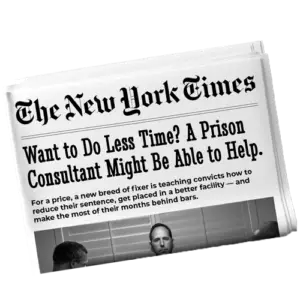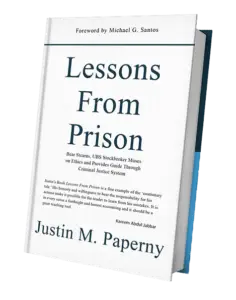Robert Cialdini’s Pre-Suasion: A Revolutionary Way to Influence and Persuade begins with a warning: If you wait until your moment of need to influence someone, you’re too late.
The book’s core premise is that effective persuasion doesn’t begin when you make your case—it begins long before that, in the moments when you frame the conversation, prime the decision-maker, and influence the conditions under which they’ll view you.
Cialdini uses example after example to show that what happens before the pitch determines the outcome. In one experiment, people were asked whether they considered themselves adventurous. Those who said yes were twice as likely to agree to an unusual product trial later in the conversation. The priming—just one word—changed the decision.
In another, hiring managers were subtly influenced by comments from a receptionist. A single positive cue—”He was really polite when he walked in”—impacted how the candidate was evaluated in the interview. Not the qualifications. Not the answers. But the setup.
Cialdini calls this “privileged moments.” Moments that come before the ask—but make the ask more likely to succeed.
Now apply that to someone facing sentencing and federal prison.
Most defendants focus on sentencing. They imagine the moment in court when they’ll speak, their lawyer will advocate, and a judge will weigh it all fairly.
But persuasion in a criminal case doesn’t start at sentencing. It doesn’t even start at the plea.
It starts the moment you become a target.
Because from that point on, every stakeholder you meet—lawyers, prosecutors, probation officers, judges, BOP staff, post-prison supervisors—is forming a perception of you. That perception will either work in your favor or cement against you.
The mistake most people make? They wait. They focus on what they’ll say later, rather than what they can show now.
From the Bench: A Perspective on Preparation
After I published a blog last month written from the perspective of a federal judge, my friend Peter Hardin—former AUSA and Marine prosecutor—texted me:
“Justin, not too bad, my man. You did a good job channeling what a federal judge would say.”
I replied: “Thanks. You liked how I said a hundred times I’m not actually a judge and have zero interest in going back to prison for impersonating one?”
Peter laughed. “Yeah. I think we all know you’re not a judge.”
Still, he said the voice worked. It clarified the stakes. It stripped away the drama and got to the point: Judges don’t care what you say. They care what you’ve done.
So I’m doing it again.
This time, through the lens of a judge like Stephen V. Wilson.
A Career Built on Discipline: Judge Stephen Wilson
Judge Wilson serves on the United States District Court for the Central District of California. Here’s his professional path:
- B.A., Lehigh University, 1963
- J.D., Brooklyn Law School, 1967
- Trial Attorney, DOJ Tax Division, 1968–1971
- Assistant U.S. Attorney, Central District of California, 1971–1977
- Chief, Fraud and Special Prosecutions Section
- Private practice, Beverly Hills, 1977–1985
- Adjunct Professor, Loyola Law School and University of San Diego
- Appointed to the federal bench by President Reagan in 1985
This is a judge who’s earned his role through decades of trial work, prosecution, academic rigor, and discipline. He has sentenced thousands of defendants. Including, at one point, someone named Justin Matthew Paperny.
Not to be confused with the Justin Matthew Paperny writing this newsletter from a beach chair in Oahu at 1:59 p.m.
Same name. Different seat.
But here’s the point: Judge Wilson didn’t get there with words. He got there with actions—year after year, position after position.
And that’s exactly the kind of record a judge like him respects.
So when defendants show up with a single apology, a speech, or a memo from their lawyer asking for leniency, what do you think he sees?
He sees a snapshot—not a pattern. He sees a pitch—not a timeline.
He’s not looking for sentiment. He’s looking for substance.
Shared Values—and Why They Matter
In Pre-Suasion, Cialdini emphasizes that the people we’re most likely to be persuaded by are those we identify with—those we perceive to share our values. It’s human nature. We respond best when we feel alignment.
That’s why your judge’s background matters.
Let’s take Judge Stephen Wilson again. Years of federal prosecution. Fraud. Teaching. He didn’t rise through the system by taking shortcuts. He did it through work—stacked consistently over time.
So ask yourself:
What does your judge value?
Discipline? Education? Public service? Accountability?
If you’ve identified those values—have you mirrored them? Have you shown work ethic, documentation, and responsibility? Have you written, taught, served, or contributed in any way that echoes what your judge spent a career building?
If not, why would they identify with you?
Look at your network today—who do you speak with, trust, listen to? Likely, those people share your values. The same is true for judges. If you present a record that shows you care about what they care about, they’re more likely to believe your change is authentic.
Years ago, I was interviewed on The New York Times’ podcast, The Daily. The reporter, Jack, asked, “What’s your sales pitch?”
“It’s simple,” I told him. “We encourage people to do what judges tell us to do. They can hire our team or do it on their own. But we implement what judges say works. And people can watch the interviews on our YouTube channel to hear it directly from the source.”
This isn’t strategy. It’s execution.
If you want to be persuasive, stop trying to impress and start showing that you understand the values of the person deciding your liberty—and that you live by those values too.
Persuasion Is Stakeholder-Specific
In our webinar on Pre-Suasion, we talked about what this looks like in action.
- Your Lawyer
Most people wait for the lawyer to guide everything. But a defense lawyer can only argue what you give them. If you don’t provide timelines, narratives, documents, or materials that show you’ve changed, they can’t advocate beyond the facts of the indictment. - The Prosecutor
Prosecutors don’t care what you believe. They care what you’ve done. We’ve seen many plea deals fall short not because the lawyer was weak—but because the client hadn’t built anything worth negotiating over. - The Probation Officer
This is the most overlooked stakeholder in the entire process. They write the Presentence Report. That report influences the judge’s decision. It’s reviewed by the BOP. It’s referenced by your probation officer after release. And still, people walk into the probation interview unprepared—no documents, no plan, no proof.
We covered this in The Janitor Who Tried. That newsletter showed what happens when someone builds a record without waiting for permission. Their work doesn’t just influence a judge—it changes how every step of the process unfolds.
- The Judge
By the time you stand in court, the judge has already read:
- The PSR
- The government’s sentencing memo
- The letters submitted
- The timeline of your conduct since the offense
You don’t have a blank slate. You have a record. If that record shows nothing, or if it only shows effort in the final two weeks, it undermines everything else you say.
- The Bureau of Prisons
As we discussed in our BOP directive breakdown, the BOP is now instructed to prioritize:
- Conditional Placement Dates
- Earned time credits
- Home confinement when halfway house space is limited
But if your PSR is thin—if there’s no narrative, no release plan, no work history—you’re not eligible for those benefits. Not in practice. Not when it counts.
- Post-Prison Supervision
We shared this in What Will They Say About You?: a client lost contracts 10 years after sentencing because he never built a counter-narrative. The government’s version remained the only one visible. His probation officer saw it. So did his clients.
Persuasion doesn’t end with the sentence. It begins again—during release, employment, parenting, business.
One Bad Sentence in the PSR Can Cost You Years
If you wait until sentencing to correct the record, it’s too late. One vague sentence—“the defendant showed no interest in rehabilitation”—can follow you through:
- BOP placement
- Early release eligibility
- Compassionate release reviews
- Probation supervision decisions
- Executive clemency
In our Tabula Rasa newsletter, we wrote about what it means to build a clean slate. That slate is built line by line, entry by entry. Not just for the judge. For every person downstream who reads what’s been recorded.
The Stonecutter Doesn’t Swing Once—And the Purple Cow Still Gets Noticed
Cialdini reminds us that people are persuaded not by one moment—but by repeated exposure to consistent signals.
This mirrors the stonecutter analogy we used in the webinar:
“Look at a stonecutter hammering away at his rock, perhaps a hundred times without as much as a crack showing in it. Yet at the hundred-and-first blow, it will split in two—and I know it was not the last blow that did it, but all that had gone before.”
The people who get the best outcomes don’t make a big swing at the end. They take daily action:
- Documenting
- Writing
- Completing service
- Showing effort
- Proving change
But showing up consistently isn’t enough. Your work also has to be distinct.
In The Purple Cow, Seth Godin talks about the importance of being noticeable—not because you scream louder, but because you exist outside of what people expect.
Imagine driving past a field of brown cows. You stop noticing them after five minutes. But if one cow were purple, you’d stop the car. You’d take a picture. You’d remember it.
What is your Purple Cow?
That doesn’t mean gimmicks or theatrics. It means you submit a narrative that sounds nothing like the others. Your letters speak to real work. Your timeline is visible. Your release plan is detailed, not templated.
You become memorable by being verifiably different. And you build that with effort, not with speeches.
This is what we explored in David and Goliath, as covered in a recent newsletter. The underdog wins not by playing the game better—but by playing a different game. That’s what Godin’s cow teaches too: stand out, credibly, through thoughtful design.
You do not need 100 ideas. You need one idea—executed early, built consistently, and positioned in a way no one forgets. Judges, probation officers, and BOP staff will remember the person who does something others don’t.
Why Most Defendants Fail to Persuade
They treat sentencing like a performance. They believe timing is everything—but never define what “timing” actually means. They assume a great speech or compelling letter will outweigh:
- A year of silence
- An incomplete PSR
- A lack of planning
They’re wrong.
As we covered in Atlas Shrugged, outcomes are not earned through declarations. They’re earned through repeated effort. You don’t earn leniency by claiming transformation. You earn it by proving that transformation, over time.
Final Thoughts (From Me, Not the Judge)
Let me step out of the robe now.
You’ve read 1,500 words on persuasion. You’ve heard the judge’s view. You’ve seen the examples—from our webinar, from the book, from clients, from literature.
What are you doing with that knowledge?
Are you still trying to find the right words? Or are you submitting the right work?
Cialdini was clear: the people who persuade best don’t ask at the right time. They act before they need the answer.
That’s what I hope you’ll do now.
Justin



